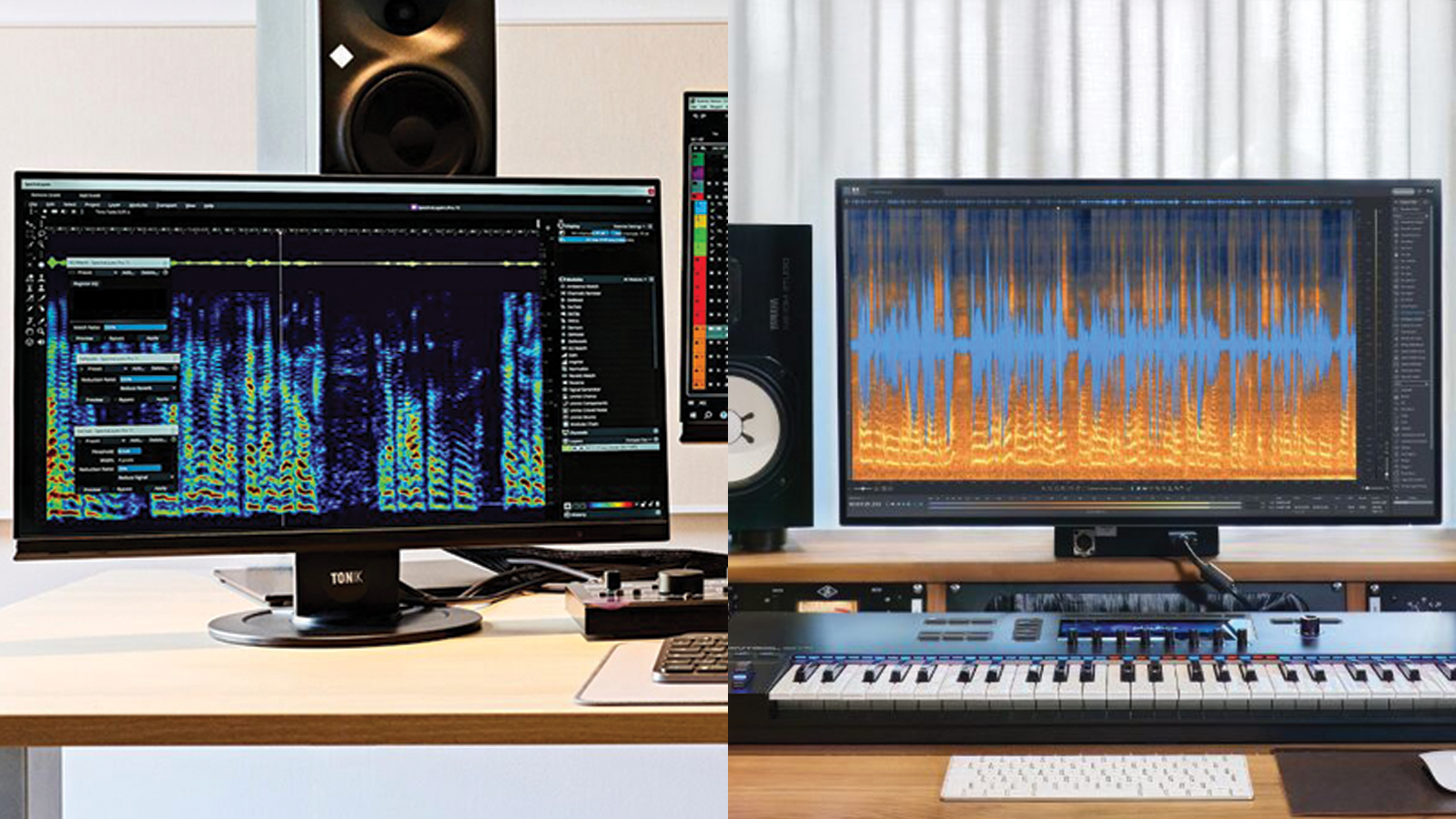
The vast majority of audio editing and processing is performed in the time domain: we specify a time range and then apply edits or processes to the audio that falls within it. There are tasks, though, that demand we work in the frequency domain too – that is, working with specific time and frequency ranges. This is where spectral editors come to the fore.
Spectral editors are especially adept at removing pops and clicks, filtering noise and eliminating hums. They also empower sound designers with the ability to sculpt and paint sound with a palette of transients, harmonics and noise. These abilities cemented spectral editing as an invaluable tool for TV and film post production. More recently, advancements in AI technology have seen growing spectral editor use amongst music producers too.
RX 11 and SpectraLayers 11
Many audio editors have some degree of spectral ability, but there are two apps in particular that stand out for being spectral all the way: iZotope RX and Steinberg SpectraLayers. This pair also incorporate a growing collection of processing modules that leverage AI-based neural networks trained to recognise different sounds, and which can therefore manipulate those sounds independently of the the rest of the audio.
To the casual observer there's very little difference between RX and SpectraLayers: They are designed for near-identical use-cases, their GUIs are similar, many modules found in one are mirrored in the other, and both have recently been updated to their eleventh version. What's needed is for someone to pit the two against each other... which is exactly what we’ve done!
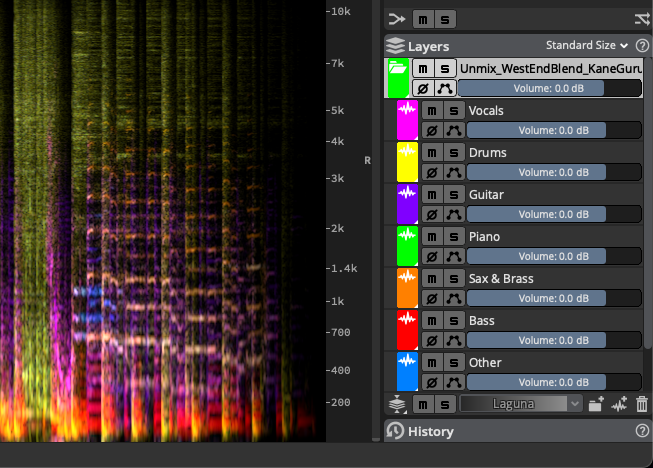
The most fundamental difference is that RX works on just one audio file or clip at a time whilst SpectraLayers can work on multiple audio elements simultaneously by arranging them into layers (analogous to layers in an image editing app). Audio within a layer can be edited, processed, mixed, soloed and/or muted independently of audio within other layers. This makes SpectraLayers unquestionably a more flexible editor than RX. Layers aside, though, things are not so clear-cut...
Round 1: Spectrograms and cursor tools
The spectrograms drawn by both apps are essentially the same, with the much same selection of parameters for setting the resolution of the visualisation. RX can adjust these parameters automatically to account for the current zoom level, making for less fiddling with settings, although making it susceptible to slow spectrogram redraws when zoomed-in.
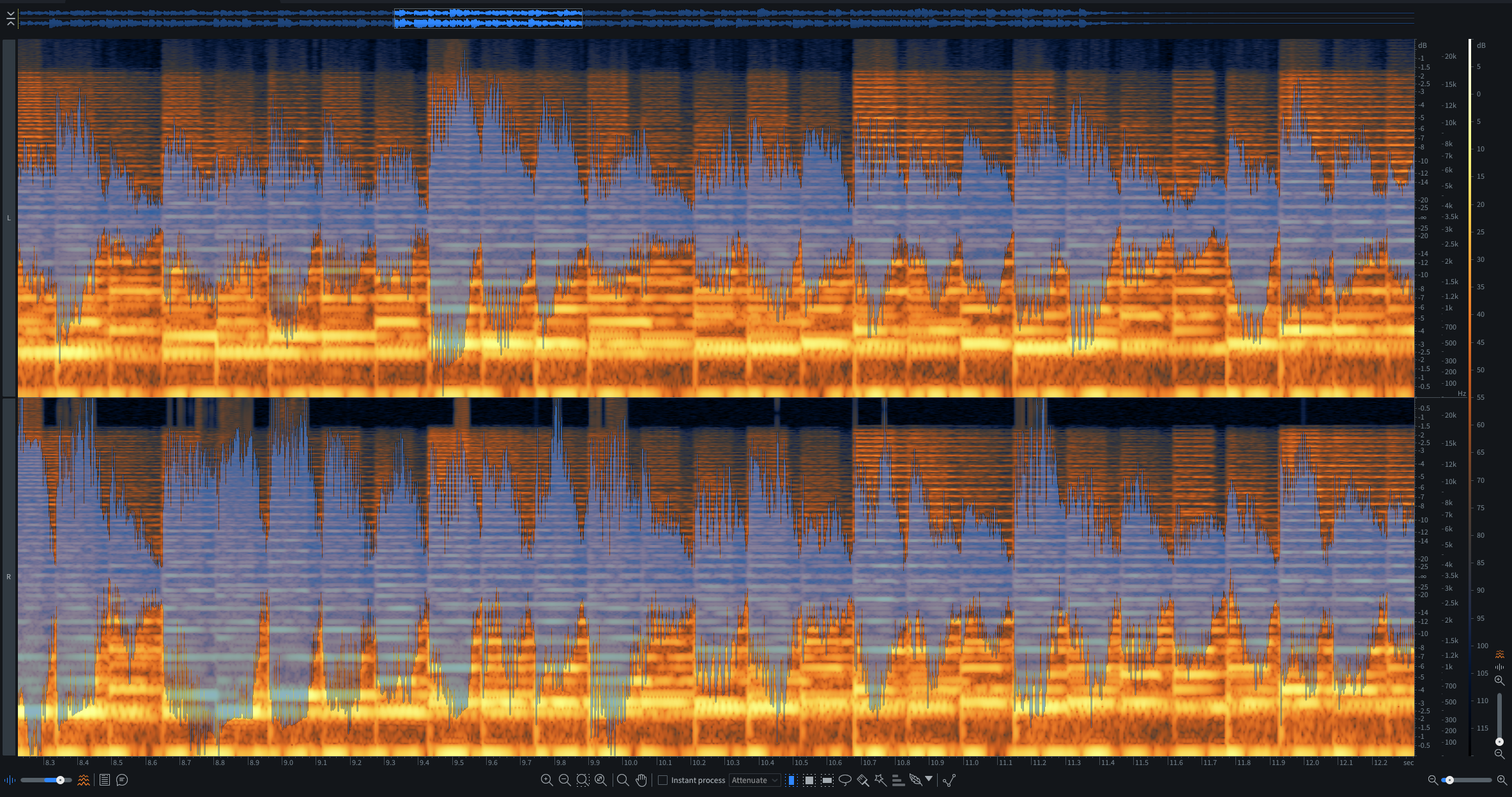
SpectraLayers doesn't exhibit this lagginess, and also has a neat trick of allowing the spectrogram to be dragged into a quasi-3D viewpoint that makes the amplitude and frequency patterns easier to understand.
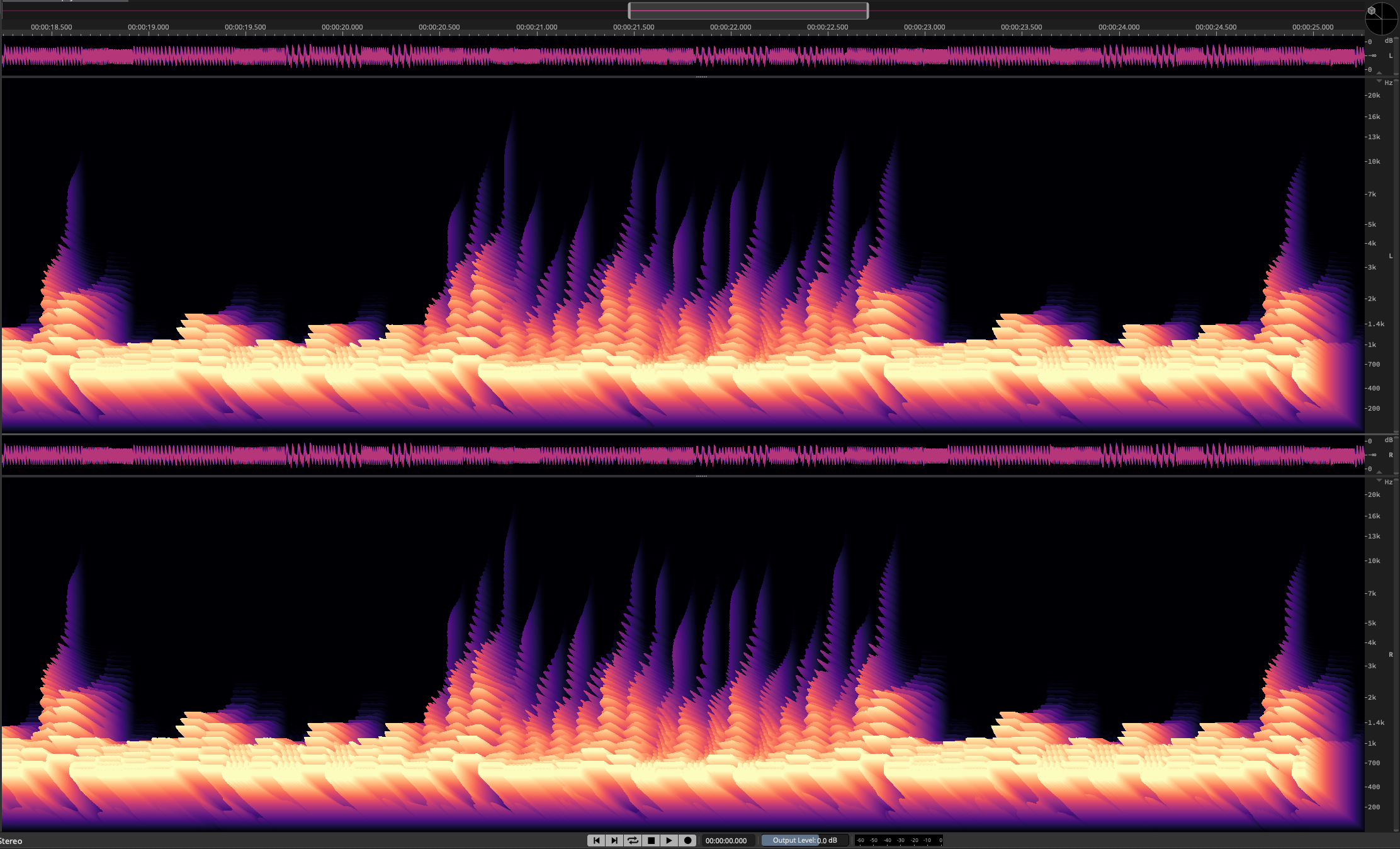
RX overlays a standard waveform on its spectrogram to aid navigation. This waveform can be distracting, but it can be dimmed-down or hidden altogether if wanted. SpectraLayers, by contrast, shows its waveform in a panel above the spectrogram, so the two visualisations never get in each other's way.
Both apps feature cursor tools for interacting with the spectrogram. SpectraLayers is the clear winner here, with all of the same selection tools as RX (time-range, frequency-range, time-and-frequency rectangle, lasso, brush and magic wand) alongside a big collection of modifier and editing tools that RX lacks.
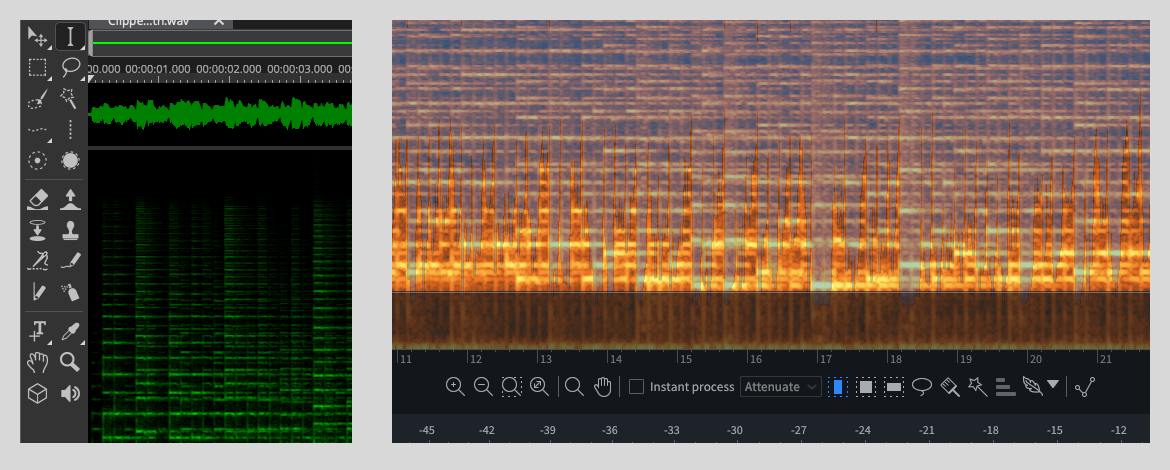
The question of which app gives the best view is largely subjective, then, but the many ways in which SpectraLayers allows us to interact with its spectrogram hands it the win in this round.
Round 2: General noise reduction
"Noise" has many meanings in the context of an audio recording: The unwanted environmental sounds picked up by microphones; the hissy noise floor inherent in analogue signal chains; hums and buzzes caused by bad cables, electrical interference and earthing loops; and any number of other take-ruining clicks and crunches.
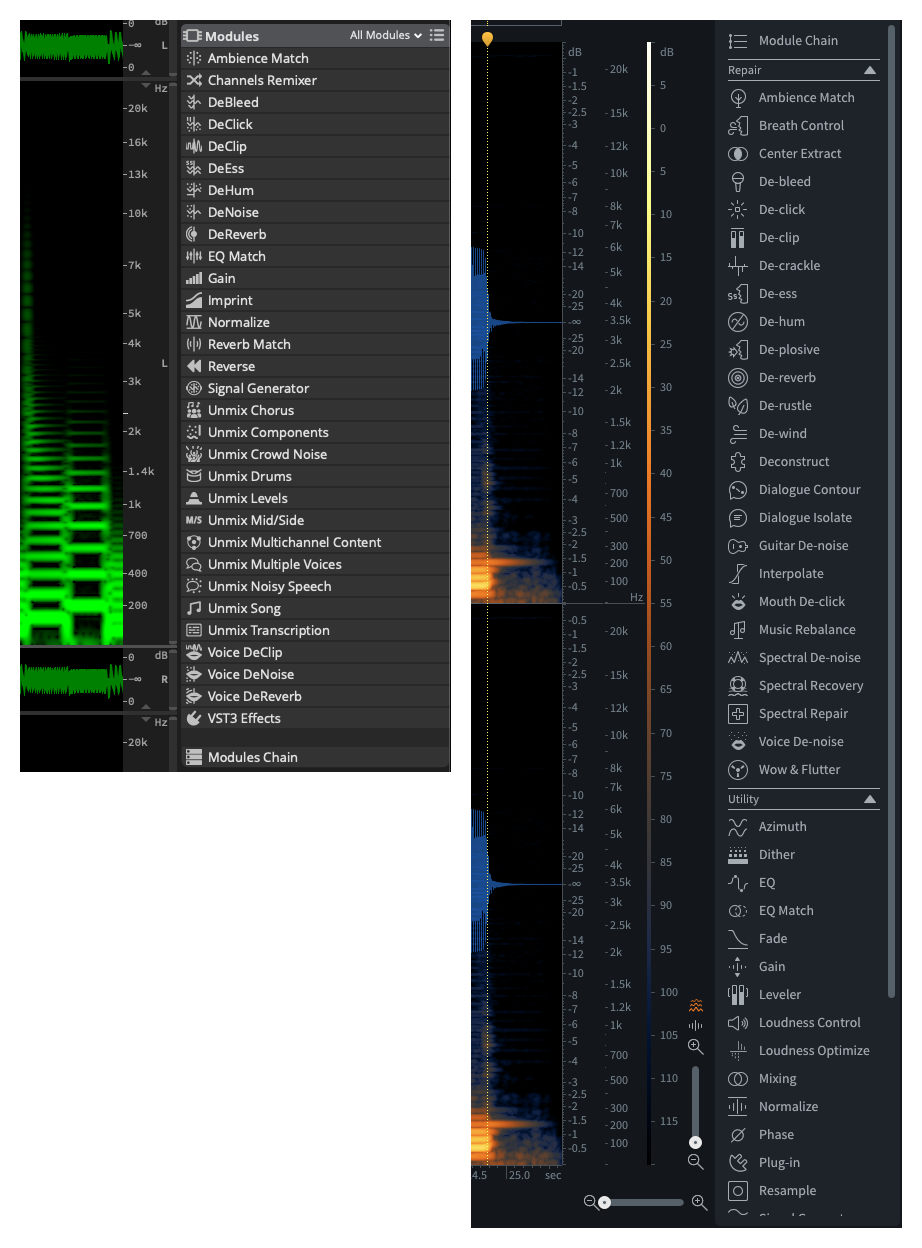
RX and SpectraLayers both feature a suite of processing modules for tackling such noises, and the choices are remarkably similar: RX's De-click, De-clip, De-hum and Spectral De-noise modules are directly mirrored by SpectraLayers' DeClick, DeClip, DeHum and DeNoise modules, respectively.
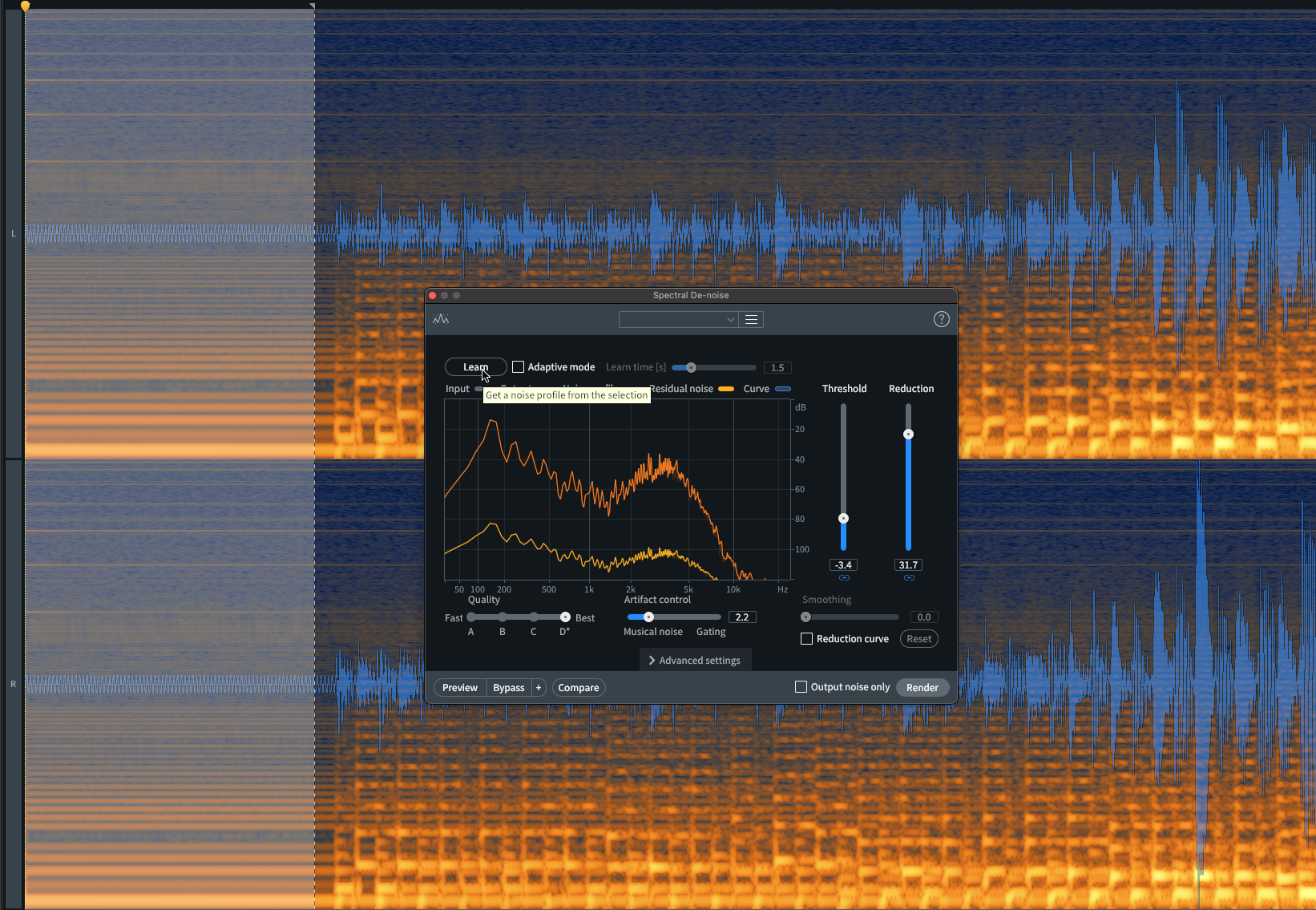
A noticeable difference here is that RX's modules tend to present more parameters than SpectraLayers', and so offer a greater degree of control over how the noise reduction process will do its thing. Many of SpectraLayers' modules offer just a single "Strength" (or similar) slider.
Both apps deliver very good results, but taking the time to hone RX's extended parameters to suit the circumstances can lead to even better results and/or fewer unwanted artefacts. Conversely, when time is of the essence, SpectraLayers' simplicity can be a big advantage.
There's not a huge amount to separate the two apps here, but based on quality of results we think RX has the upper hand.
Round 3: Voice repair
Recording clean vocals or dialogue is challenging. Mics pick up spill from other performers/actors and from the environment – especially challenging during TV and film production when working outside of the controlled environment of a studio or sound stage. There are many other common issues too, such as mic pops and mouth clicks.

SpectraLayers and RX both offer two modules for general voice de-noising, the former's Voice DeNoise and Unmix Noisy Speech mirrored by the latter's Voice De-noise and Dialogue Isolate.
SpectraLayers' Voice DeNoise uses AI to separate the voice from background noise, music or even other voices, something it does exceptionally well with only minimal sonic artefacts. In contrast, RX's Voice De-noise uses traditional noise reduction filtering that does a good job for constant, steady noise, but doesn't cope well with constantly-shifting environmental noise.
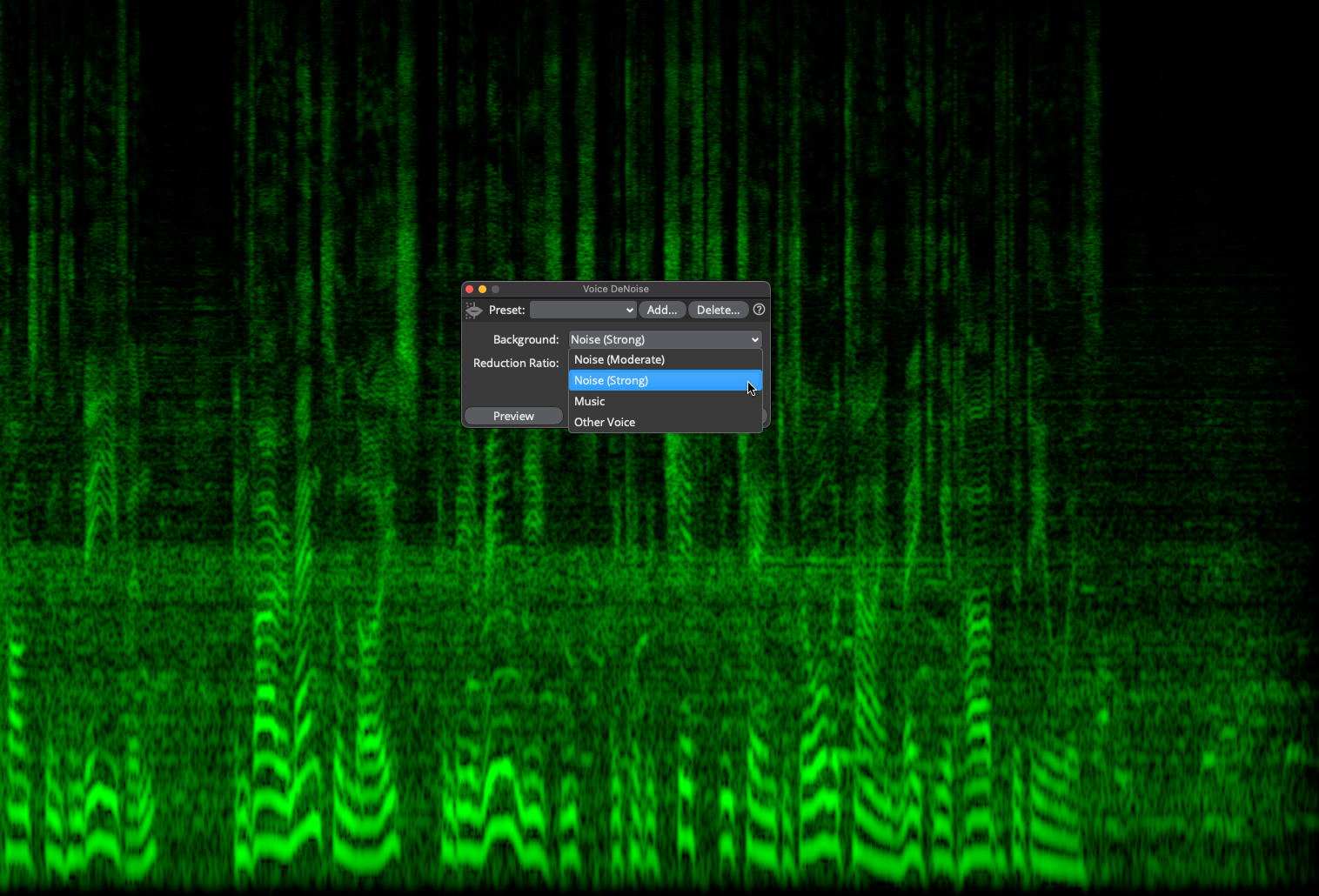
RX's AI comes into play with the Dialogue Isolate module, which allows you to rebalance or mute the voice, noise and/or reverb within a recording. The SpectraLayers equivalent, Unmix Noisy Speech, does something very similar, splitting dialogue and noise onto separate layers from where they can be rebalanced or muted. Comparing the two we found that RX's results could become somewhat grainy and distorted, whereas SpectraLayers could completely eliminate loud and complex environmental noise with barely a single artefact sneaking through.
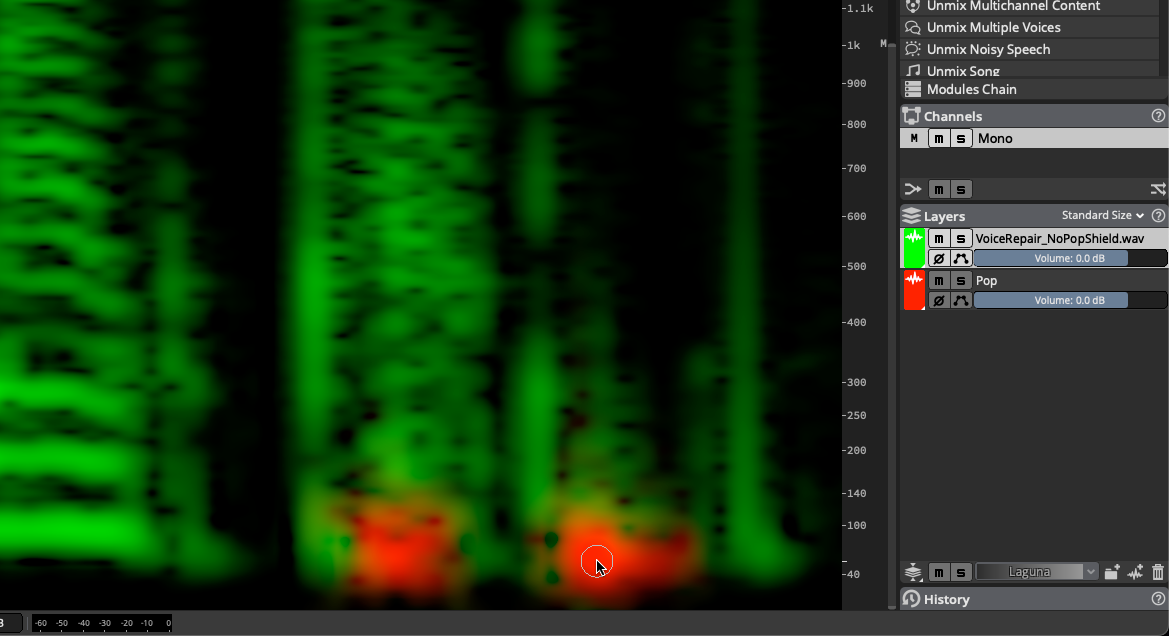
Both apps have modules for treating other common voice problems, and whilst RX has more of these, SpectraLayers has cursor tools that can do similar tasks, albeit manually.
For example, RX has a De-plosive module for tackling mic pops and SpectraLayers does not. Conversely, SpectraLayers has editing tools that make it easy to remove mic pops manually, a procedure which would be far more long-winded if done in RX.
RX's additional voice processors notwithstanding though, the sheer effectiveness of SpectraLayers' voice denoising modules sees it win this round with ease.
Round 4: Reverb control
Studios can spend a fortune on acoustic treatment, much of which is aimed at reducing unwanted or unpleasant reverberations. When recording outside of a studio, though, reverb can be a big nuisance.
SpectraLayers and RX each offer both a general purpose and a voice-specific de-reverb module. The former's general-purpose DeReverb uses AI to tackle the problem, making a definite improvement but one that does sound somewhat processed.
RX's De-reverb, on the other hand, has to learn the reverb pattern, with the results being entirely dependant on whether a suitable portion of reverb can be found. If seeded with an impulse recording – a hand clap or clapperboard clack, for example – it works exceptionally well.
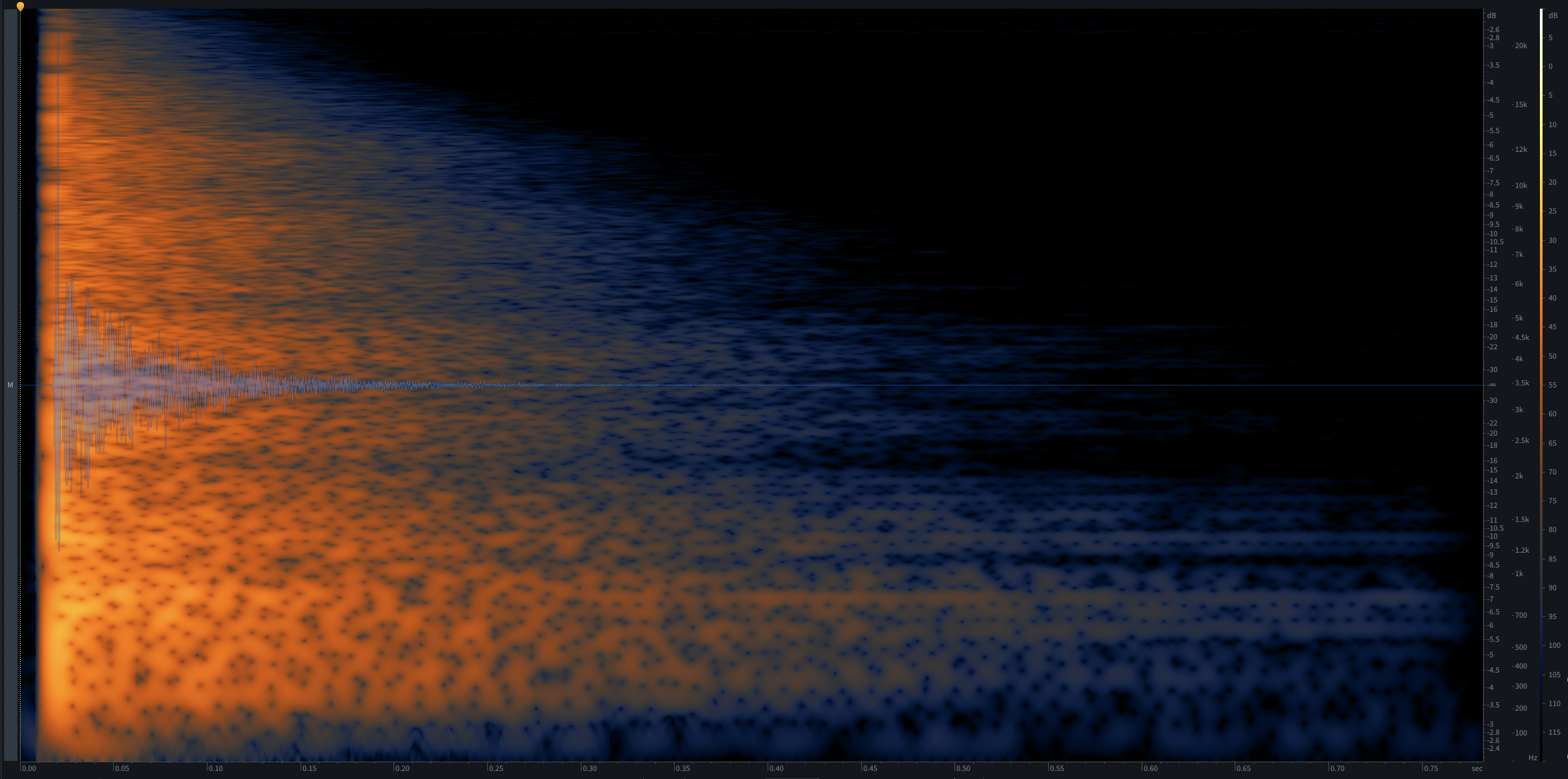
For voice-specific work, SpectraLayers' Voice DeReverb performs well, but it does have a noticeable impact on the voice itself. In contrast, RX's Dialogue Isolate module is spectacularly effective at removing reverb from speech, giving clean, reverb-free results effortlessly.
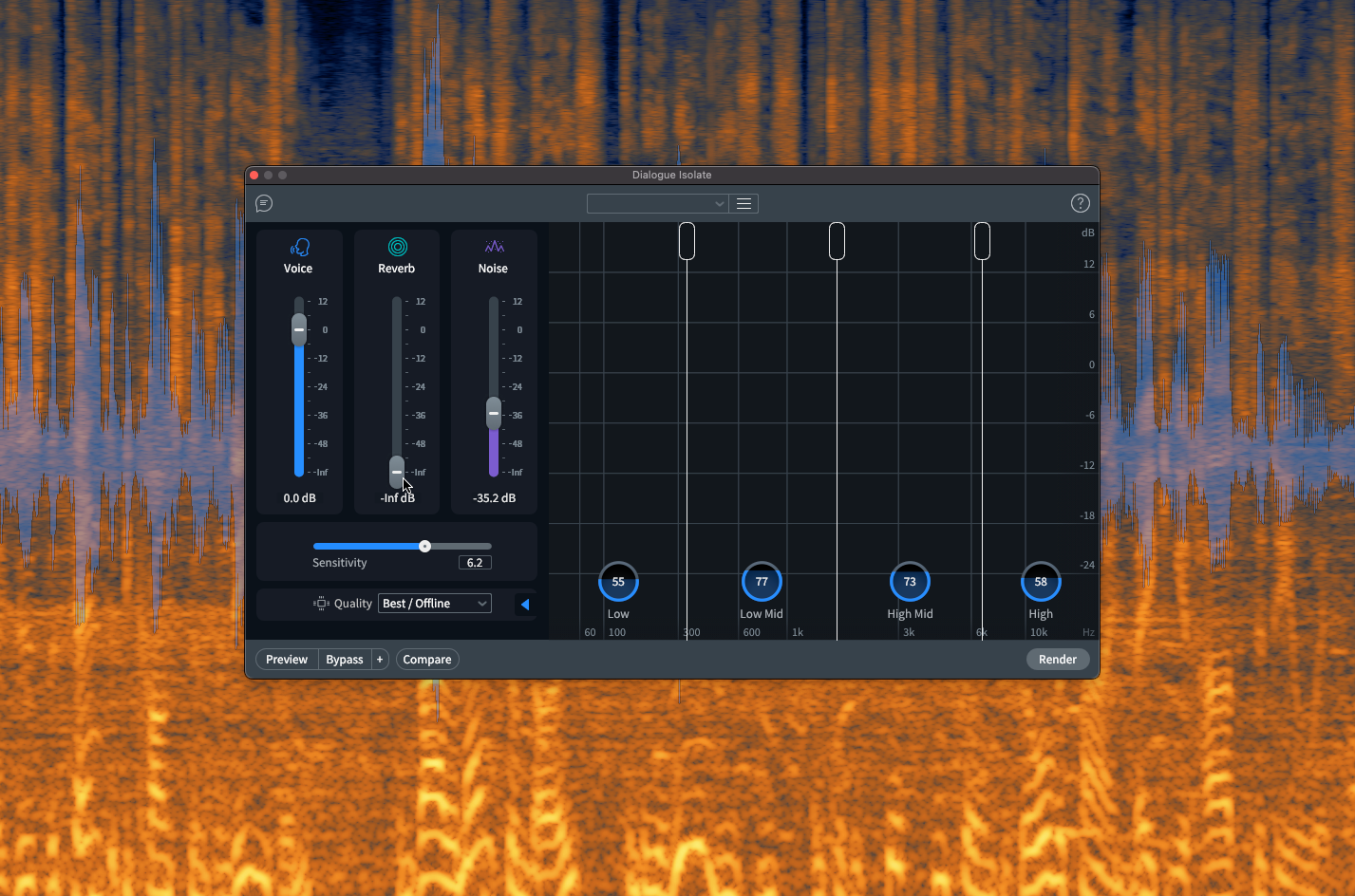
On the flip side of the coin, SpectraLayers includes Reverb Match (RX has no equivalent) which learns the reverb from one recording an applies it to another. As with RX's De-reverb, results depend on finding a "clean" portion of reverb to analyse so, again, best results are achieved using an impulse recording. Even so, a half-decent convolution reverb plugin loaded with that impulse will deliver an as-good-or-better result.
Overall, RX's reverb removal results are consistently cleaner and less artefact-y than SpectraLayers', making RX the clear winner in this round.
Round 5: EQ matching
TV and film post-production often involves combining dialogue elements that have been recorded at different times, at different locations, and using different (often multiple) mics. This presents significant challenges for the audio post-production team who need to account for the sonic differences that result from the disjointed production process.
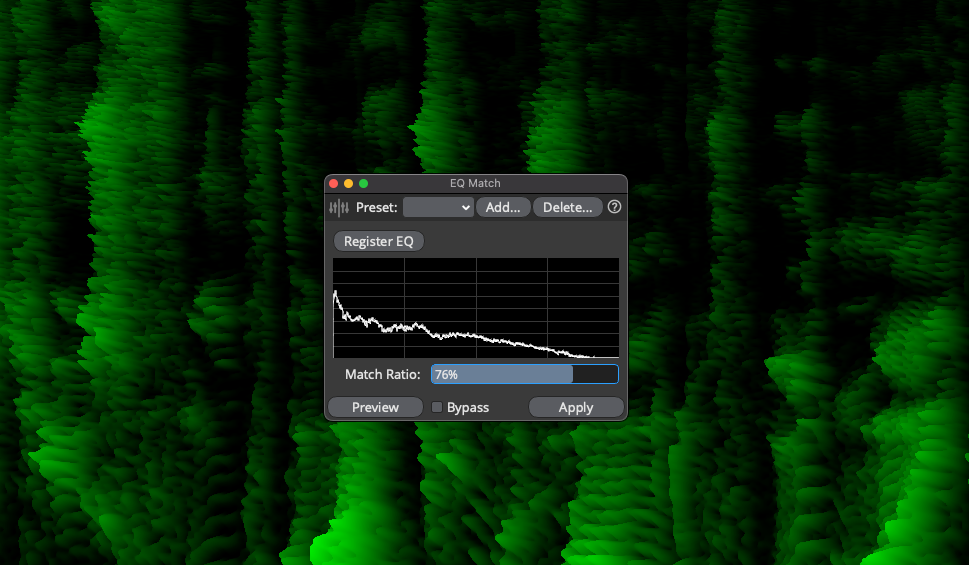
The EQ matching modules found in both RX and SpectraLayers are intended for just such mic-matching use-cases. What they aren't designed to do is imprint the EQ characteristics of a full mix onto another, and they don't do a very good job of this...
...not that they did a much better job of mic matching in our tests either! SpectraLayers' EQ Match module failed even to approach a good match, and whilst RX's equivalent did a better job, it was still little better than could be achieved with a few minutes of regular EQ-ing.
RX therefore wins the EQ matching bout, but only by default.
Round 6: Stem separation
Only a few years ago we would have pointed and laughed at anybody claiming they could take a finished, mixed track and break it up into its constituent stems, yet this is something that AI-empowered spectral editors are now doing to an increasingly impressive level of accuracy.
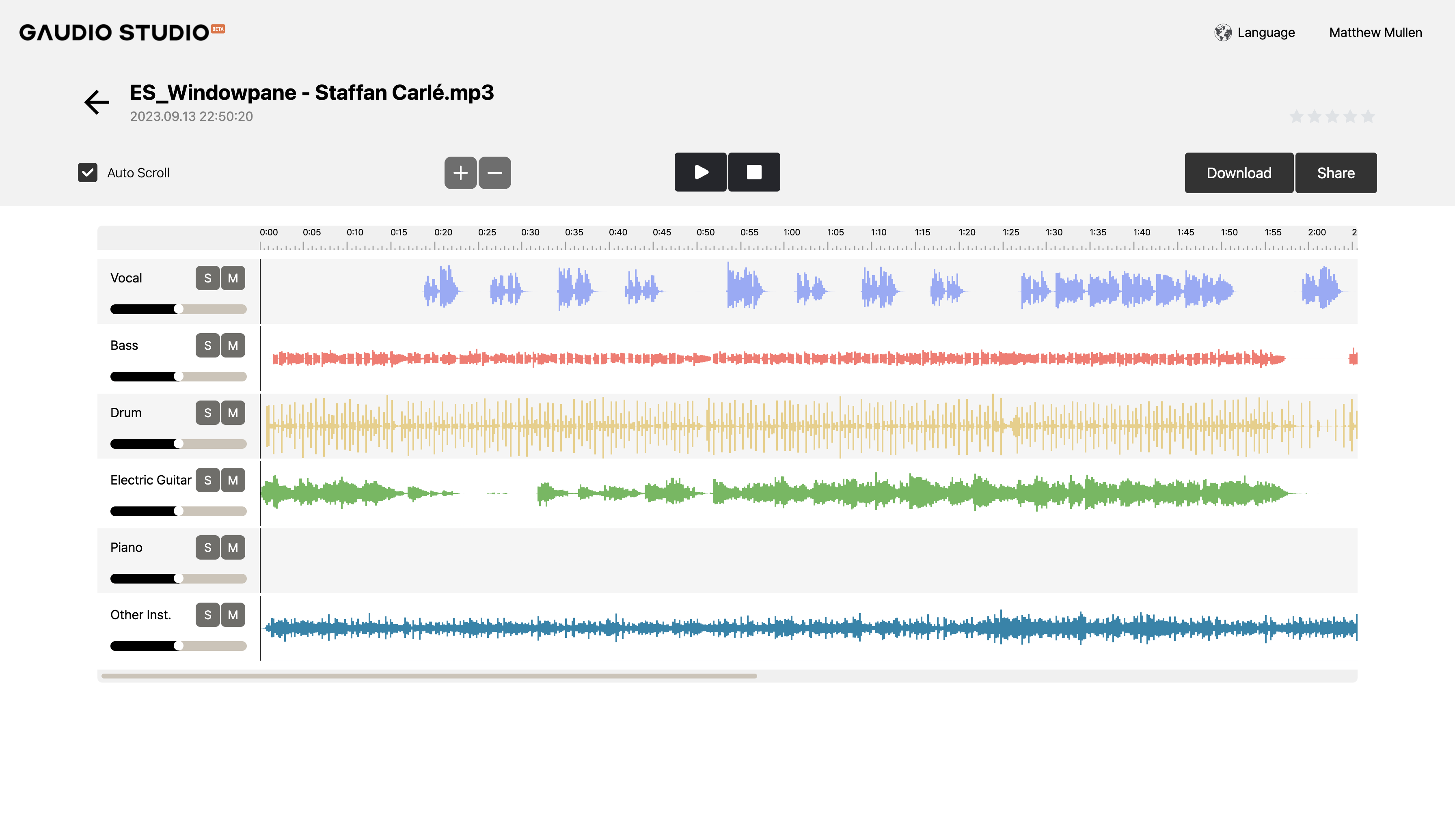
We tested 5 of the best stem separation software tools (and the best one was free)
The benefits for music producers are huge, especially remixers and DJs who can isolate, reuse and rework the elements of a track that most inspire them. It's also handy when editing background and incidental music for TV and film, allowing vocals to be removed and making it easier to match the music to the flow of the visuals.
The secret to this near magic lies in training neural networks to recognise different sounds and instruments. In RX's case, the Music Rebalance module recognises vocals, drums and bass, with everything else grouped as "Other", and offers the choice of either adjusting the volume balance of these stems or splitting them out into individual files.
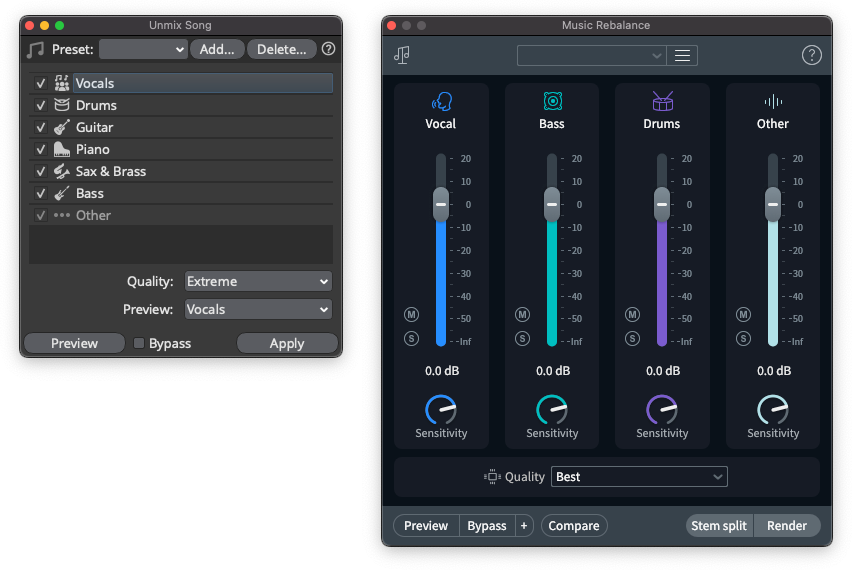
SpectraLayers has a far wider repertoire, recognising the same sounds as RX as well as guitars, piano and "sax & brass" (although in our tests, the sax & brass recognition was rather hit-and-miss). Each stem is split to its own layer from where you can mix, mute, solo and export them as needed.
SpectraLayers also includes modules that can further deconstruct stems: Unmix Drums separates a drum kit into its constituent kick, snare, hi-hat and cymbal parts; Unmix Chorus can separate lead and backing vocals (although not very reliably in our tests); and Unmix Multiple Voices can be trained to recognise different voices in a recording and then isolate each.
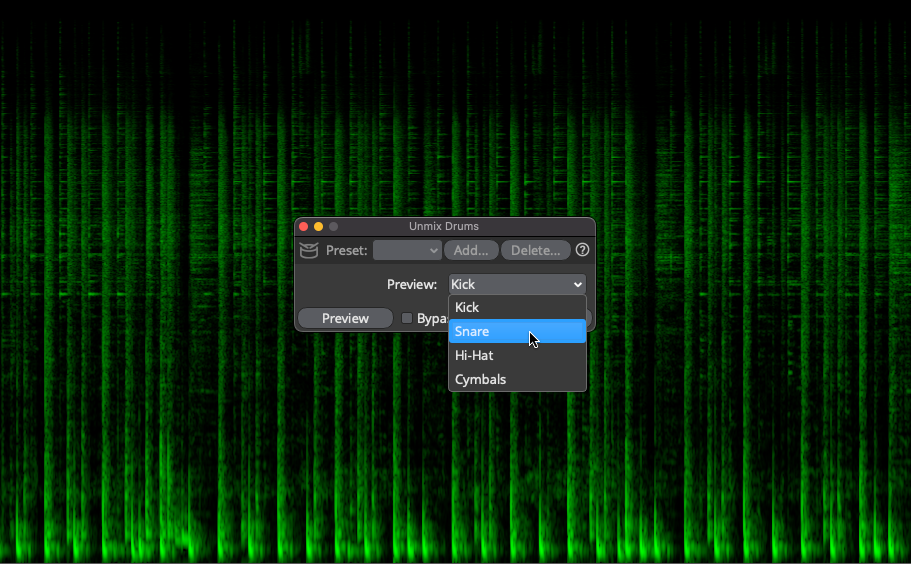
This is cutting-edge stuff, so it is unrealistic to expect perfection. Nevertheless, whilst RX's separation is impressive, SpectraLayers' is even more so. This, plus the larger repertoire and additional unmixing modules, sees SpectraLayers win this particular round by a country mile.
Round 7: DAW integration
RX and SpectraLayers are fully standalone apps, but both have ways in which they can integrate with a host DAW. The simplest relies on passing audio from DAW to editor, and then back again after editing. RX comes with the Connect plugin that, when loaded into a DAW track, manages the round-trip. SpectraLayers relies on the ability of many DAWs to register external editing apps with which to share audio, and also has an AAX AudioSuite plugin for doing the same in Pro Tools.
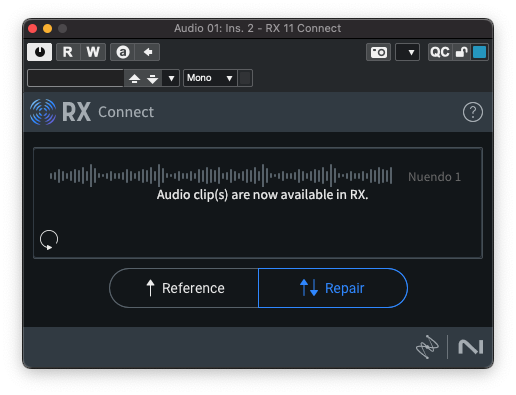
Both apps also come with ARA2 plugins that integrate the app directly into your DAW. At the time of writing, RX supports Avid Pro Tools, Apple Logic and Presonus Studio One. SpectraLayers' ARA2 plugin has wider compatibility, supporting Steinberg Cubase and Nuendo, Magix Samplitude, Sequoia and Sound Forge, Presonus Studio One, Cockos Reaper, BandLab Cakewalk and MOTU Digital Performer.
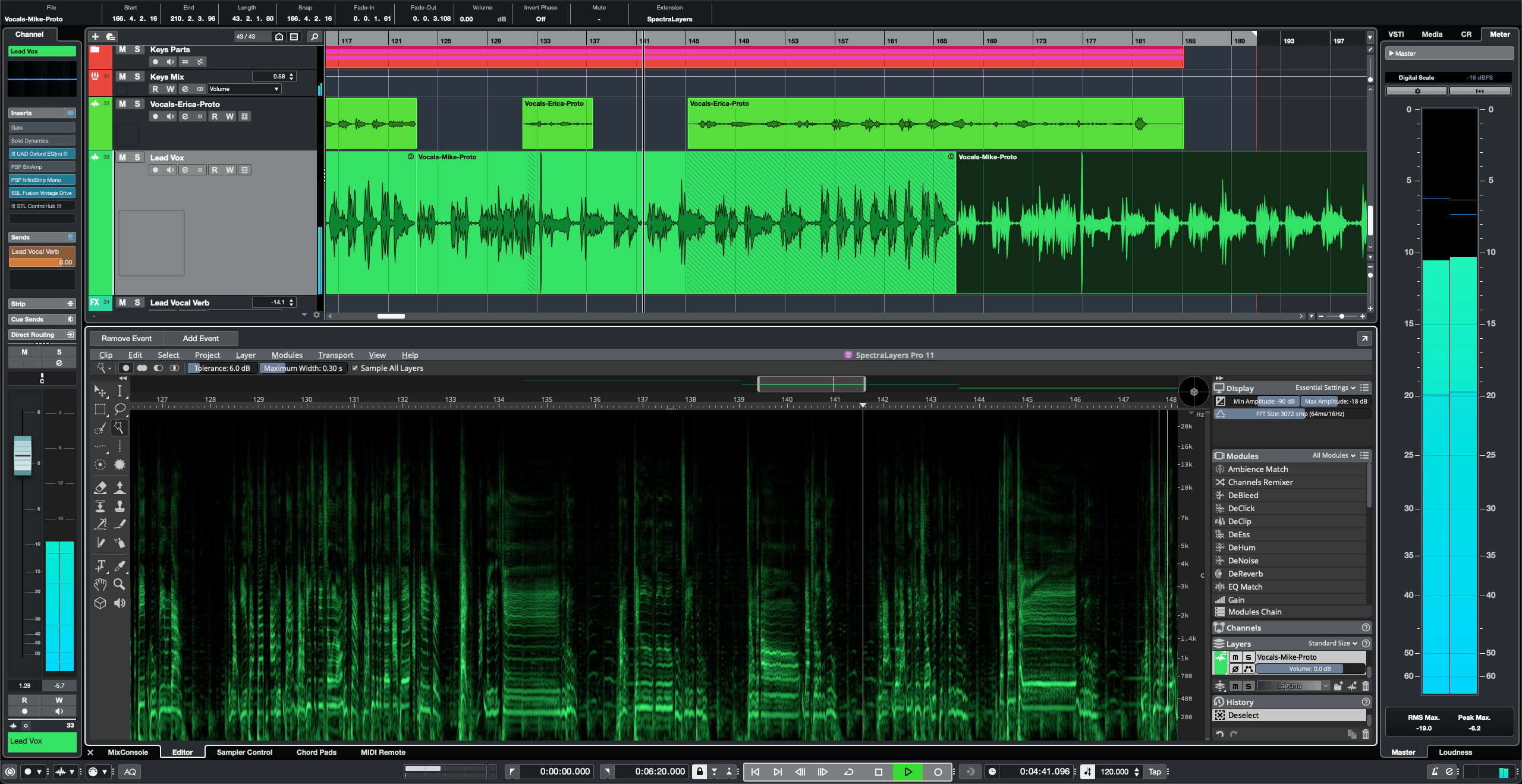
In addition to its ARA2 plugin, RX includes standard plugin versions of many of its processing modules. This makes up for the shorter list of DAWs supported by its ARA2 plugin, and leads us to judge this round as a dead heat.
Round 8: Miscellany
RX and SpectraLayers both have modules and features that aren't shared by the other, and that do not fall into any of the above categories. RX has more modules, and whilst many of these are standard fare – dithering, gain adjustment and the like – it does also have a clutch of modules aimed squarely at audio mastering: Loudness Optimise, Loudness Control and Streaming Preview. Useful though these modules are, there is nothing spectral about them and so they have no weight when comparing RX with SpectraLayers.
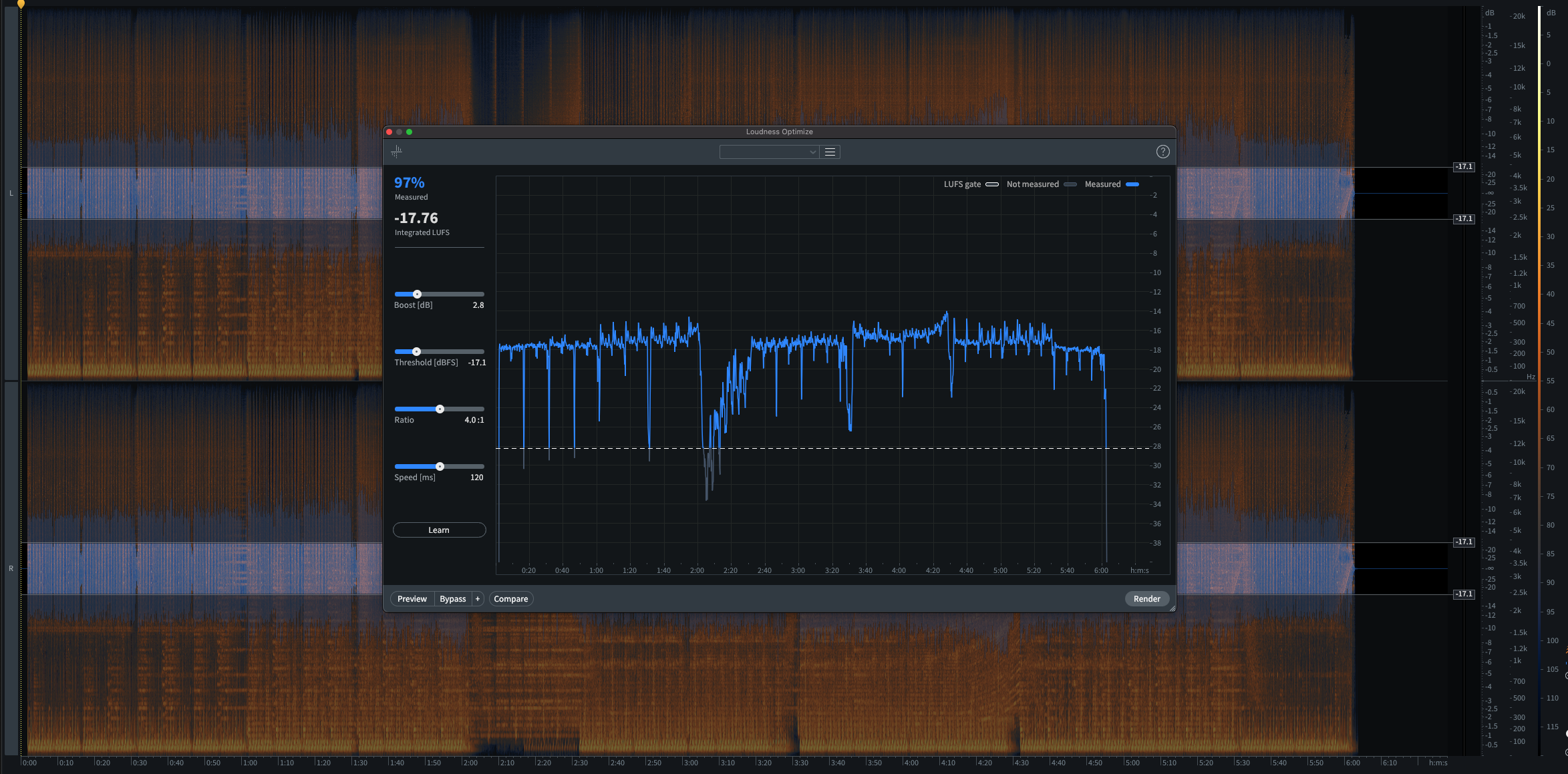
One trick both apps do have in common is the ability to transcribe a dialogue recording, although they go about it in different ways. Neither app is immune from making mistakes here, but we found SpectraLayers' transcriptions to be consistently the most accurate.
The final thing to compare is pricing. RX often gets a bad rap here due to the eye-watering price of its Advanced edition, some 4x to 5x higher than the fully-featured SpectraLayers Pro. The features Advanced has over-and-above its Standard edition are aimed solely at TV and film post-production, though, so it is fairer to compare SpectraLayers Pro to RX Standard. Both also come in cut-down Elements editions.
So, whilst RX Standard and Elements are only marginally more expensive than SpectraLayers Pro and Elements (respectively), the objective numbers show that SpectraLayers is slightly better value for money.
Conclusion
The capabilities of RX and SpectraLayers are endlessly impressive and astonishing in their own right, but it's impossible to declare that one is better than the other. Even if we could do so, the pendulum will swing back-and-forth as the respective development teams continue to train the neural networks that underlie both apps’ cleverest features.
What does seem to be the case, though, is that RX's strengths and features lean slightly more towards TV and film post production than do SpectraLayers', which lean slightly more towards music production. It's a marginal distinction, though, so be sure to grab the demo versions and see which works best for you and your productions.






